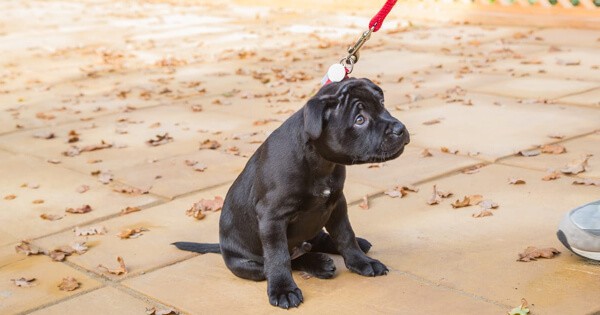Impulse control is defined as the ability to resist temptation or an urge. This skill is especially crucial for dogs that will be used as personal protection dogs, police K9, or in military units.
Here are some tips on how to build your dog’s impulse control to help you get more out of your training sessions.
Frustration Tolerance is Key
Frustration tolerance is not an innate trait that dogs are born with. Puppies and untrained adult dogs will react in unwanted ways of being frustrated. Some of the situations that can trigger frustration include:
- Being left alone
- Being put into a crate
- Having to wait for mealtime
- Not getting enough exercise
- Lack of attention (playing, affection, etc.)
- Going to the vet
- Waiting to go out the door for a walk
- Encountering other dogs/people out in public
- Noisy or high-distraction areas
Why & When this Behavior Occurs

According to an article on PetHelpful, orphaned puppies and only-litter pups are most prone to having the least amount of frustration tolerance and self-control. This is because the pup’s mom and littermates teach some of these skills during feeding, cleaning, and playing time.
Signs that your dog is frustrated to include crying, destroying household items, whining, barking, pawing, or jumping. It is important to never give your dog what it wants when behaving like this.
This will only reinforce that this behavior is an appropriate way to get you to comply.
The best thing to do is to wait for your dog to be in a calm state of mind before addressing his or her demands. Some examples include waiting until your dog is calm before going for a walk, accepting a visitor into the house, or releasing the dog from its crate.
Training Self-Control Will Help Increase Frustration Tolerance
Self-control is an extremely important trait for dogs that will be serving multiple purposes as a companion and guard/service dog. The best ways to build this skill include:
- Exposing them to frustrating or distracting situations.
- Teaching a proper response.
For example, if a dog is going to be exposed to sudden, loud noises and people running all around him (police or military K9s), then the puppy will need exposure to these scenarios. This is accomplished by increasing the intensity of noise and distraction levels in order to build the dog’s ability to stay focused on the task at hand.
Exposure also helps dogs that will be used for service to the disabled, emotional support companions, pet therapy dogs, or for helping veterans with PTSD.
Rewarding that Works
Negative reinforcement is when you punish a dog for bad behavior. For example, if the dog digs in the trash while you’re not looking, negative reinforcement (such as using a loud, firm voice) can be quite effective.
Positive reinforcement, on the other hand, is when you reward your dog for a job well done. The science behind this approach has been proven to be a highly effective way to get the results you want. This is especially true for breeds like the German Shepherd and Belgian Malinois because they have a natural drive to please their master.
Rewards for positive behavior can include treats, food morsels, playtime, affection, verbal praise, or using a clicking device.
Your Protection Dogs Sales Expert – Scott’s K9
If you are looking for Belgian Malinois for sale or for a German Shepherd guard dog, get in touch with Scott’s K9 today. Steve Scott has been training and acquiring the world’s best guard dogs, police and military K9, and family protection dogs for over 15 years.
Contact us today to learn more about the trained guard dogs available for sale.
